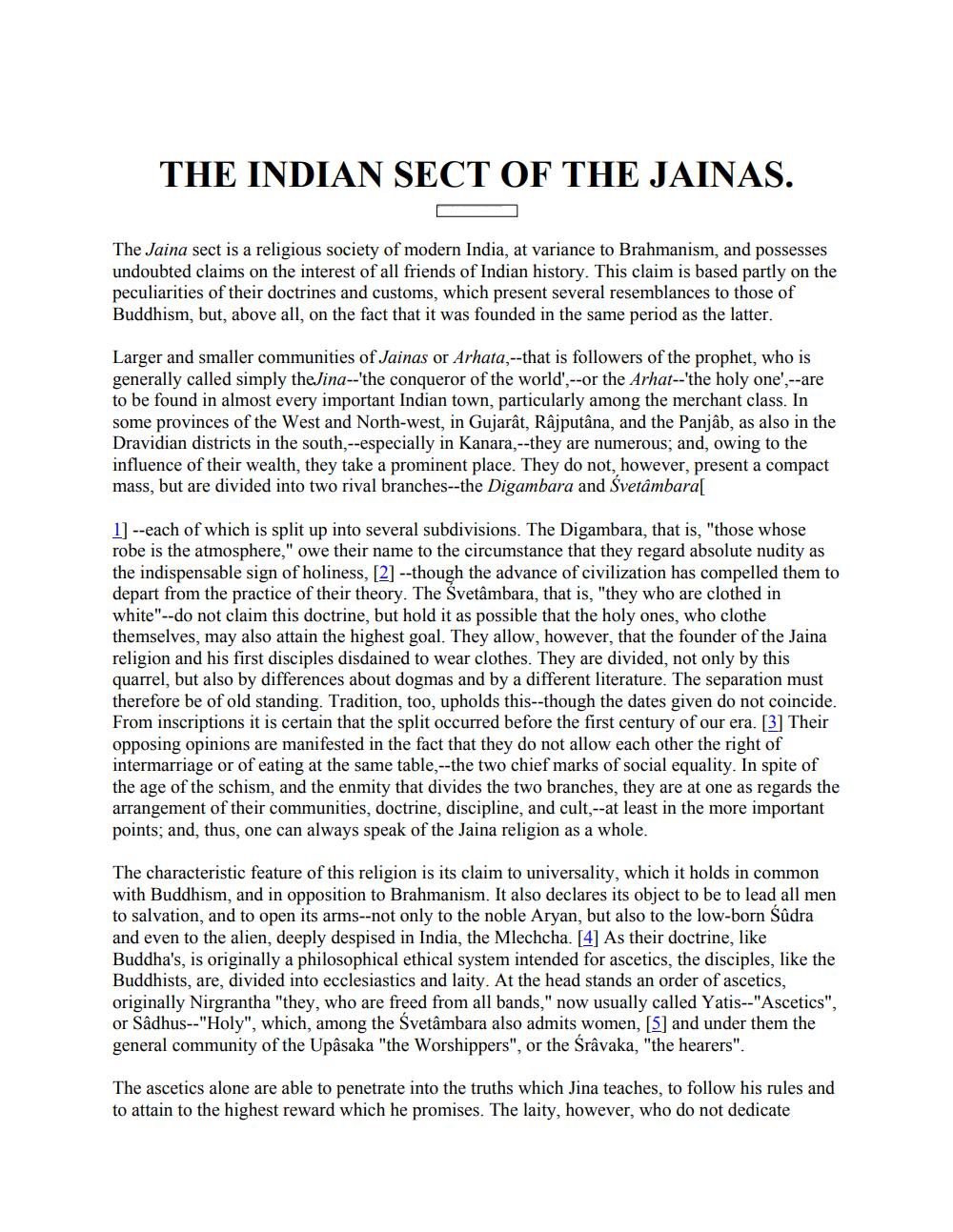________________
THE INDIAN SECT OF THE JAINAS.
The Jaina sect is a religious society of modern India, at variance to Brahmanism, and possesses undoubted claims on the interest of all friends of Indian history. This claim is based partly on the peculiarities of their doctrines and customs, which present several resemblances to those of Buddhism, but, above all, on the fact that it was founded in the same period as the latter.
Larger and smaller communities of Jainas or Arhata,--that is followers of the prophet, who is generally called simply theJina--'the conqueror of the world',--or the Arhat--'the holy one',--are to be found in almost every important Indian town, particularly among the merchant class. In some provinces of the West and North-west, in Gujarât, Rajputâna, and the Panjab, as also in the Dravidian districts in the south,--especially in Kanara,--they are numerous; and, owing to the influence of their wealth, they take a prominent place. They do not, however, present a compact mass, but are divided into two rival branches--the Digambara and Svetâmbara[
1] --each of which is split up into several subdivisions. The Digambara, that is, "those whose robe is the atmosphere," owe their name to the circumstance that they regard absolute nudity as the indispensable sign of holiness, [2] --though the advance of civilization has compelled them to depart from the practice of their theory. The Svetâmbara, that is, "they who are clothed in white"--do not claim this doctrine, but hold it as possible that the holy ones, who clothe themselves, may also attain the highest goal. They allow, however, that the founder of the Jaina religion and his first disciples disdained to wear clothes. They are divided, not only by this quarrel, but also by differences about dogmas and by a different literature. The separation must therefore be of old standing. Tradition, too, upholds this--though the dates given do not coincide. From inscriptions it is certain that the split occurred before the first century of our era. [3] Their opposing opinions are manifested in the fact that they do not allow each other the right of intermarriage or of eating at the same table,--the two chief marks of social equality. In spite of the age of the schism, and the enmity that divides the two branches, they are at one as regards the arrangement of their communities, doctrine, discipline, and cult,--at least in the more important points; and, thus, one can always speak of the Jaina religion as a whole.
The characteristic feature of this religion is its claim to universality, which it holds in common with Buddhism, and in opposition to Brahmanism. It also declares its object to be to lead all men to salvation, and to open its arms--not only to the noble Aryan, but also to the low-born Śûdra and even to the alien, deeply despised in India, the Mlechcha. [4] As their doctrine, like Buddha's, is originally a philosophical ethical system intended for ascetics, the disciples, like the Buddhists, are, divided into ecclesiastics and laity. At the head stands an order of ascetics, originally Nirgrantha "they, who are freed from all bands," now usually called Yatis--"Ascetics", or Sâdhus--"Holy", which, among the Śvetâmbara also admits women, [5] and under them the general community of the Upasaka "the Worshippers", or the Śravaka, "the hearers".
The ascetics alone are able to penetrate into the truths which Jina teaches, to follow his rules and to attain to the highest reward which he promises. The laity, however, who do not dedicate




